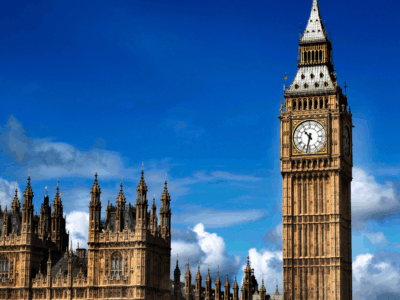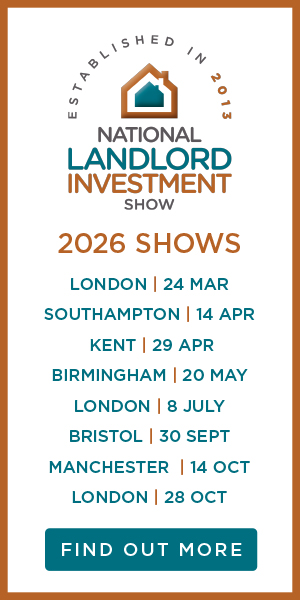The latest Prime London Demand Index by London lettings and estate agent, Benham and Reeves, reveals that demand for prime property in the capital fell by -2.5% in the third quarter of this year, somewhat dampening the good mood brought on by a promising uptick in Q2. But super prime demand has actually seen demand increase.
The Prime London Demand Index by Benham and Reeves monitors demand for London’s most expensive properties based on the level of market activity seen between the £2m to £10m threshold and the super prime market of £10m+. Demand is based on the proportion of all homes listed for sale across the prime market that have already been sold subject to contract.
Prime market (£2m to £10m)
The latest index shows that across the prime market (£2m to £10m), 16.9% of prime London properties had found a buyer in Q3 2024, marking a -2.5% drop in demand compared to the second quarter of the year. Prime demand also remains -2.6% down on the year, but this is an improvement from the previous quarter when annual demand was down -3.8%.
Having topped the table for Q2 quarterly growth, Hampstead once again recorded the strongest demand increase in Q3, rising by a further +4% to sit at 19.6%.
Richmond recorded quarterly growth of +2.2%, followed by Pimlico (+1%), Clapham (+0.1%), and Marylebone (+0.1%). These are, however, the only prime markets to record an uptick in demand.
Buyer appetite reduced most significantly in Battersea (-7.8%), Chiswick (-7.6%), and Islington (-7.6%).
Super prime market (£10m+)
At the very top of London’s property ladder, just 2.6% of available properties had found a buyer in Q3 2024. This does, however, mark a demand increase of +0.4% compared to the previous quarter, but still remains -2.6% down on the year.
Victoria recorded the largest quarterly increase in super prime demand, rising by +3.1%, while Knightsbridge (+2.9%), Belgravia (+2.3%), Kensington (+1.5%), Mayfair (+0.6%), Marylebone (+0.4%), St. John’s Wood (+0.2%), and Holland Park (+0.1%) also saw quarterly upticks in demand.
The largest quarterly drops in super prime demand were recorded in Chelsea (-2.3%) and Hampstead (-1.8%).
Director of Benham and Reeves, Marc von Grundherr, commented
“London’s prime market is a step removed from the general housing market, and so it rarely moves in line with the capital’s overall narrative. While the new Labour government might be bringing a new sense of optimism and security to prospective buyers elsewhere on the market, Keir Starmer’s promises to target wealth as a way of increasing funding for public services is likely a major reason for a decline in demand in London’s prime market.
Labour plans to penalise wealth through things like a hike in Capital Gains Tax and an overhaul of Inheritance Tax legislation, both of which are major considerations for wealthy property buyers looking to spend multi millions on a home. There remains uncertainty around the exact scale of Labour’s changes, so it’ll be interesting to observe prime demand after the government’s full hand is revealed during the Autumn Budget on 30th October.”
| Prime London Market – £2m plus | ||||
| Table shows demand for prime London property £2m plus in Q3 2024, alongside quarterly and annual change | ||||
| Area | Prime category | Q3 2024 | Q Change | Annual change |
| Hampstead | Prime NW London | 19.6% | 4.0% | 2.6% |
| Richmond | Prime SW London | 32.9% | 2.2% | 10.0% |
| Pimlico | Prime C London | 13.7% | 1.0% | 4.1% |
| Clapham | Prime SW London | 36.8% | 0.1% | -10.6% |
| Marylebone | Prime C London | 7.2% | 0.1% | 0.8% |
| Wapping | Prime E London | 0.0% | 0.0% | -5.3% |
| Fitzrovia | Prime C London | 4.3% | -0.2% | -3.8% |
| Knightsbridge | Prime C London | 9.9% | -0.4% | -0.5% |
| Victoria | Prime C London | 9.9% | -0.5% | -2.3% |
| St John’s Wood | Prime C London | 12.4% | -0.6% | 5.7% |
| Belgravia | Prime C London | 8.0% | -1.0% | -2.9% |
| Maida Vale | Prime C London | 9.9% | -1.1% | -3.4% |
| Kensington | Prime C London | 9.9% | -1.5% | -2.2% |
| Wimbledon | Prime SW London | 27.2% | -1.5% | -8.0% |
| Holland Park | Prime C London | 11.7% | -2.0% | -2.0% |
| Chelsea | Prime C London | 11.2% | -2.4% | -1.2% |
| Canary Wharf | Prime E London | 9.5% | -2.5% | 2.4% |
| Notting Hill | Prime C London | 14.9% | -3.1% | -1.8% |
| Barnes | Prime SW London | 34.3% | -3.8% | 1.0% |
| Putney | Prime SW London | 25.6% | -4.0% | -12.6% |
| Regents Park | Prime C London | 7.8% | -5.1% | -3.9% |
| Fulham | Prime SW London | 17.9% | -5.2% | -1.8% |
| Mayfair | Prime C London | 5.1% | -5.4% | -4.6% |
| Wandsworth | Prime SW London | 30.4% | -6.2% | -3.4% |
| Highgate | Prime NW London | 29.2% | -6.7% | -9.4% |
| Islington | Prime N London | 35.2% | -7.6% | -1.0% |
| Chiswick | Prime SW London | 26.6% | -7.6% | -15.2% |
| Battersea | Prime SW London | 13.0% | -7.8% | -4.7% |
| Overall average | 16.9% | -2.5% | -2.6% | |
| Super Prime London Market – £10m plus | ||||
| Table shows demand for super prime London property £10m plus in Q3 2024, alongside quarterly and annual change | ||||
| Area | Prime category | Q3 2024 | Q Change | Annual change |
| Pimlico | Prime C London | x | x | x |
| Wapping | Prime E London | x | x | x |
| Canary Wharf | Prime E London | x | x | x |
| Battersea | Prime SW London | x | x | x |
| Clapham | Prime SW London | x | x | x |
| Wandsworth | Prime SW London | x | x | x |
| Putney | Prime SW London | 0.0% | x | 0.0% |
| Fulham | Prime SW London | 0.0% | x | 0.0% |
| Barnes | Prime SW London | x | x | x |
| Chiswick | Prime SW London | x | x | x |
| Richmond | Prime SW London | x | x | x |
| Victoria | Prime C London | 7.5% | 3.1% | -4.0% |
| Knightsbridge | Prime C London | 2.9% | 2.9% | 0.7% |
| Belgravia | Prime C London | 5.0% | 2.3% | -5.2% |
| Kensington | Prime C London | 2.8% | 1.5% | -2.6% |
| Mayfair | Prime C London | 5.7% | 0.6% | 3.8% |
| Marylebone | Prime C London | 3.2% | 0.4% | -1.3% |
| St John’s Wood | Prime C London | 6.9% | 0.2% | 6.9% |
| Holland Park | Prime C London | 3.7% | 0.1% | 3.7% |
| Fitzrovia | Prime C London | 0.0% | 0.0% | -12.5% |
| Maida Vale | Prime C London | 0.0% | 0.0% | 0.0% |
| Notting Hill | Prime C London | 0.0% | 0.0% | -12.5% |
| Regents Park | Prime C London | 0.0% | 0.0% | 0.0% |
| Highgate | Prime NW London | 0.0% | 0.0% | 0.0% |
| Islington | Prime N London | 0.0% | 0.0% | x |
| Wimbledon | Prime SW London | 0.0% | 0.0% | 0.0% |
| Hampstead | Prime NW London | 7.7% | -1.8% | 1.0% |
| Chelsea | Prime C London | 3.1% | -2.3% | 3.1% |
| Overall average | 2.6% | 0.4% | -2.6% | |
The Prime London Demand Index by Benham and Reeves monitors demand for London’s most expensive properties based on the level of market activity seen between the £2m to £10m threshold and the super prime market of £10m+. Demand is based on the proportion of all homes listed for sale across the prime market that have already been sold subject to contract.
Demand data sourced from Rightmove (18/09/2024)























Comments